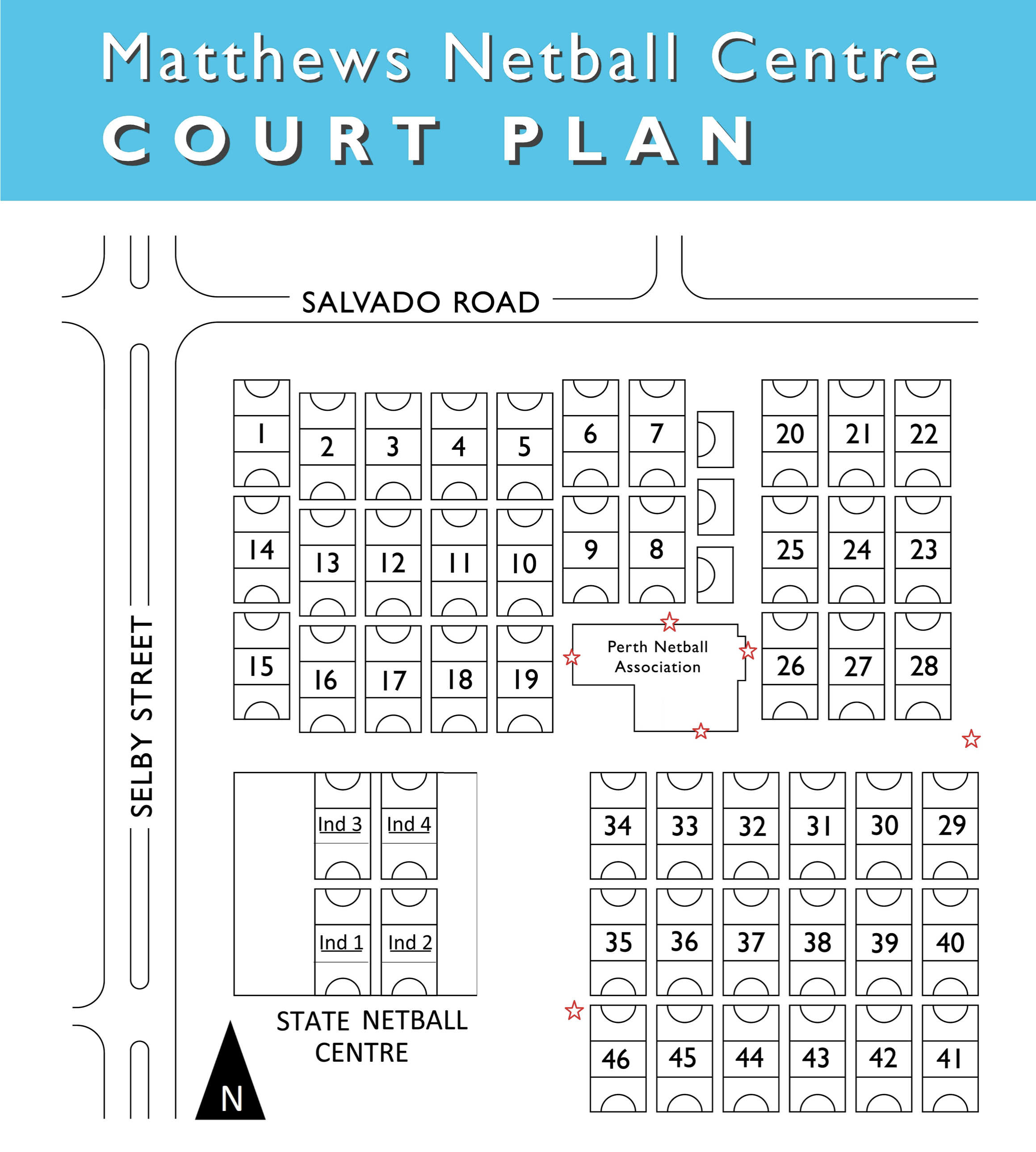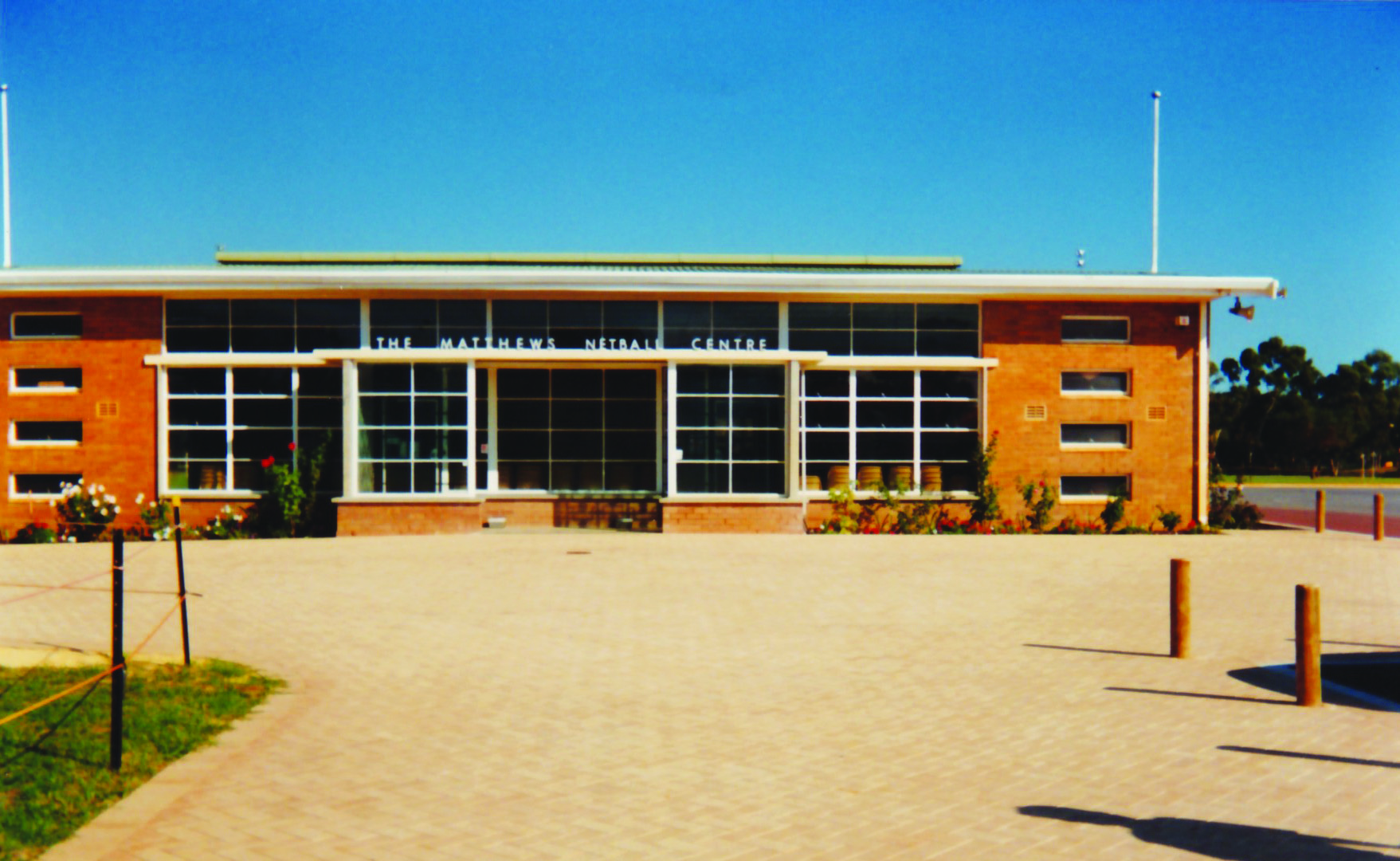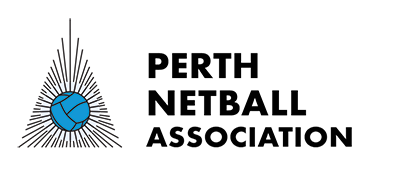Matthews’ Netball Centre
Matthews’ Netball Centre has been the home of netball in WA since it’s opening in 1960. It is located in the Wembley Sports Park, which includes the Gold Netball Centre – the administration base for Netball WA and West Coast Fever.
Today Matthews’ is also the home of the Perth Netball Association. It has 46 hard courts (31 with lighting) and three practice thirds. A modern administration building provides PNA with offices and the following facilities:
- Function hall with a capacity of 125 people
- Boardroom with multimedia facilities
- Storage facilities for clubs
- First aid room
- Toilets and changerooms
- Canteen with full kitchen
Our facilities are available for hire. Please complete a booking form below and email to pnaadmin@perthnetball.com.au
Traffic, Parking & Transport Information
On match days, our parking resources can be stretched to their limits. PNA encourages all visitors to the Matthews Netball Centre to carpool or use alternative methods of transport to the grounds, where possible.
If you can’t find a parking spot in one of our carparks, don’t despair – we have identified a number of other (legal) parking options within a short walk of the courts. Refer to our Alternative Parking Options Information Sheet for more details.
Public transport runs close by the centre, with bus stops along Cambridge and Selby Streets and the Daglish Train Station a short stroll away. For full details specific to your travel requirements please refer to the Transperth Journey Planner.
Court Plan

History of Matthews’
Yellagonga’s Group
The land around Subiaco and Jolimont – including the present-day location of the Matthews Netball Centre – was part of the Mooro territory occupied by Yellagonga’s group. Like others in Noongar society, Yellagonga’s family lived and moved across their land according to the seasons; utilising their knowledge of the land to travel by well-known pathways from watering holes to campsites and gathering places.
The interlinking lakes and wetlands in Perth’s north and west, as well as the freshwater springs and sites along the Swan River foreshore to Crawley, play an immensely significant role in Noongar creation stories of the Waakarl or Waugal. The waterways were essential to people’s survival; providing freshwater, plenty of crabs, shell fish, frogs, turtle and fowl in the lakes and swamps, bush food such as wild roots and fruits, and edible gum and animals like lizards and snakes. Crawley Bay (Matilda Bay), Dyson’s Swamp (Shenton Park Lake, now Lake Jualbup) and Jolimont Swamp (now Mabel Talbot Park) were all hunting and gathering places and some remained Aboriginal camps well into the twentieth century.
White Settlement
Within only a few years of the Swan River Colony being established, the life of the Noongar people was irrevocably impacted. Relationships with land were all but destroyed when family groups left their homelands either by force or by encroaching white settlement. In 1836, only 28 people were named as belonging to Yellagonga’s community.
The settlers, with their houses, fences and roads, their crops and their animals, took over the land and stopped access to traditional hunting and gathering places. A herdsman by the name of Joseph Perry grazed cattle at Jolimont swamp and the land was later subdivided and named “Jolimont Estate”. The white settlers were supported by laws that placed draconian measures on Aboriginal people. Aboriginal children were removed from their parents and sent to assimilation camps at places like Moore River.
Daglish Granny
At Jolimont Swamp (Mabel Talbot Park), a freshwater spring located to the south-west of the lake was the permanent camp of Mrs Clara Layland, known to Noongars as ‘Daglish Granny’, a Noongar elder and custodian of knowledge. Up to the mid twentieth century, other Aboriginal people also stayed in this area because of the close proximity of a water and food supply, and perhaps to listen to the stories of Daglish Granny.

Did you know?
Until 1970 netball was internationally know as ‘Women’s Basketball’!
Matthews’ Basketball Centre is officially opened, in her honour, on 20 Aug 1960 by City of Perth Lord Mayor, Mr H R Howard JP at a cost of £50,000 (equivalent to $1.5m in 2021).
With 4 hard courts, 46 grass courts and offices for the state’s governing body, the centre becomes known as the ‘most outstanding’ in the Southern Hemisphere. The first competition was held in 1961 with just over 2,000 players across 164 senior and 146 junior teams.
In 1967 the 2nd World Women’s Basketball Tournament (now the Netball World Cup) was held with 8 countries competing. In the final New Zealand beat Australia, 40 v 34.
Over the years Matthews’ has hosted the All Australian Netball Championships on a number of occasions, as well as, various other festivals and tournaments. Eight redevelopments have seen the size of the centre grow significantly.
In 2021 the centre celebrated its 60th anniversary which coincides with the final redevelopment to date, including resurfacing of the last grass courts.


